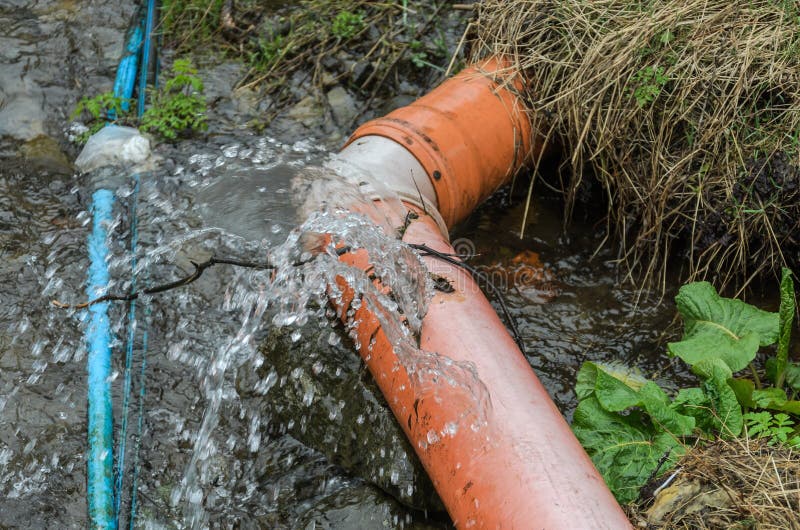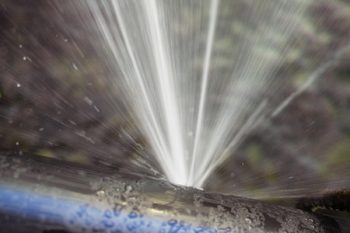Your Guide to Managing a Bursting Pipe
Your Guide to Managing a Bursting Pipe
Blog Article
The article in the next paragraphs pertaining to What to Do When a Pipe Bursts is exceedingly intriguing. Don't miss it.

The instant response when a pipe bursts in your residential property is to go in complete panic setting. Do not stress; you are not alone as many property owners feel by doing this, also. Besides, this issue can result in considerable house damages.
Though it might be tough to do, stay tranquil as well as accumulated. Making hasty choices can make the situation worse. To assist you out, below are six instant actions you should take when facing burst pipes. Remember, expertise is power so reading up on this before it occurs will allow you to remain in control even in the middle of a massive emergency water leakage:
Conduct a Quick Visual Assessment
Though your instinct is to shut down the valve right now, pause for some time and also conduct a quick aesthetic evaluation of the website. Attempt and spot where the water is dripping from. Doing so will certainly allow you to suggest the plumber on what area to look at. This less-than-a-minute examination will conserve you time and aid your plumber rapidly recognize the source.
Close the Main Water Shutoff
After a quick check, you can currently shut off the primary supply of water. Maintaining water running will lead to enormous damages. The last thing you require is significant flooding warps wooden floors or ruins devices and furniture. You likewise intend to stay clear of mold growth. Shut off the shutoff and also call the plumber for an emergency examination.
Drain the Pipe
As you wait for the plumber to arrive, drain the water flowing in the pipes. Just run your tap and flush the toilet to guarantee that whatever water is remaining will totally drain. When you do this, the leakage will certainly stop going where it's not expected to be in the first place. With that said, the plumber can likewise function much faster. Simply don't fail to remember to shut off the faucet after the pipelines are drained pipes.
Attempt a DIY Pipeline Fixing
If you've got handyman abilities, do a minor fixing like sealing off a little fracture. You can buy piping sealer to make quick fixes. Beware with the application, so you don't worsen any type of troubles. If you need to tighten up a few nuts as well as screws, resist need to over-tighten as this can cause leaks down the line.
Do away with Any Kind Of Standing Water
Don't allow any standing water sit for as well. It will certainly lead to more damages if water permeates into your floors or carpeting. You also don't desire it to flow into important items like electronics. Tidy up the water and also dry the area off promptly. If you have electrical fans, keep them going to flow the air as well as promote much faster drying out.
Call a Dependable Plumber
If you feel uncertain regarding your abilities to fix a little split or small leakage, it is best to call a specialist plumber. When it involves repair services, they have the expertise, abilities, devices, as well as experience to obtain points done quick. Playing with pipelines is not a joke as it can lead to even more issues if done incorrectly. Locating a trustworthy plumbing service ensures your water leak is dealt with efficiently as well as effectively.
A Frozen Pipe Has Burst, What Are The Next Steps?
How to Tell if Pipes are Frozen
It’s important to catch frozen pipes early to prevent damages. Typically, you will be able to boost your thermostat or talk a professional plumber before any damage occurs. However, here are a few signs that will help you identify if your pipe is frozen.
No Water – An obvious sign that you have frozen pipes is if there’s a complete lack of water coming from your faucets or fixtures. Frost – If you can gain access to view your pipes, check to see if there is visible frost on them. Take note of which parts of the pipe has frost. Smell – If your pipes freezes, it will block food and waste down your drain, causing a backup and your room to begin to have a bad smell. How to Tell if a Frozen Pipe has Burst
Inspect the Inside of the Building. Go through each area of the building and look for actively dripping water and signs of water damage. Examine any exposed pipes and check them for frost or condensation. Especially keep an eye on rooms such as bathrooms, kitchens, laundry rooms, and unheated areas of the building. Turn on the faucets and flush your toilets. Ensure they are working and the water has no discoloration or smell to it. If there is only a slow trickle of water coming out, or no water at all, this might mean a frozen pipe has burst. Check your water meter. If all fixtures in the building are off and it still shows movement, this could be a sign of a burst. Check the exterior of the building. Look for water building up anywhere out of the ordinary, or sinkholes in your yard. Remove Water Right Away
It is important to clean up water right away to prevent mildew and mold buildup. You will need towels, buckets, mops, and a wet/dry vacuum. Do not wait for the plumber to remove the water for you, the longer you wait the more likely it is that you’ll get mold or severe water damage.
Avoid Extreme Temperatures
First off, make sure the temperature in your home is no lower than 55*F. If you are going to be gone for a long time, turn off your water with the shut off valve to prevent freezing and bursting.
Don’t Leave Still Water in Pipes
When the weather gets too cold, you should let water drip from your faucet. While the dripping might be irritating, this will help prevent water from freezing. You can detect a frozen pipe if the faucet stops working, or the toilet doesn’t refill.
Taking Precautions with Frozen Pipe Damage
A burst pipe is one of the most common issues people face at home. There can be a number of reasons why pipes burst in harsh climate conditions such as extremely cold temperatures. Low to freezing temperatures can freeze the pipes, causing there to be frozen pipe damage and leading them to burst. Regardless of the type of pipes – whether they be metal or plastic, they can still expand or burst and cause water damage to your home. A burst pipe also requires a significant amount of costs in repairs. This is why it’s important to take all the safety measures to prevent pipes from bursting.
Below are some frequently asked questions and helpful steps to take to safely solve any problems you may be experiencing with your pipes at home.
What to Do When a Pipe Bursts:
Turn off the main water supply Contact a professional Quickly remove and clean excess water to avoid further water damage. Take pressure off pipes by draining the faucets Circulate warm air in your home to slowly thaw pipes Use a repair sleeve to temporarily cover the damaged area of the pipe https://jenkinsrestorations.com/frozen-pipe-has-burst-whats-next/

I was made aware of that write-up about 6 Basic Steps to Stop a Burst Pipe from Getting Out of Control from someone on another web blog. Remember to set aside a second to distribute this write-up if you enjoyed reading it. Thank-you for your time spent reading it.
Free Estimate Report this page